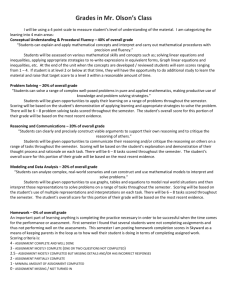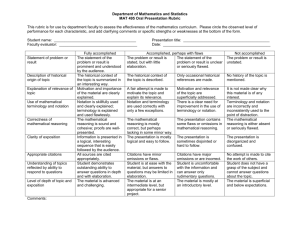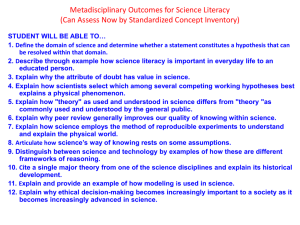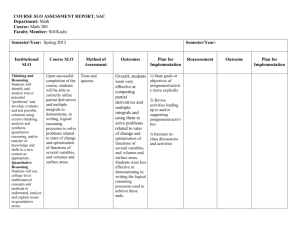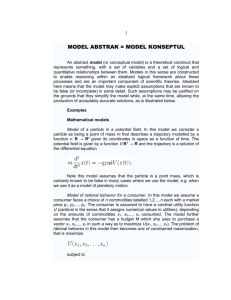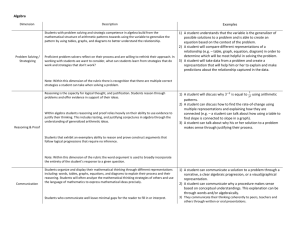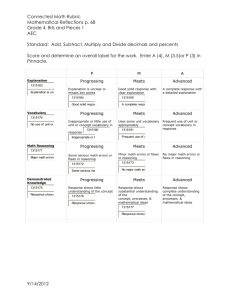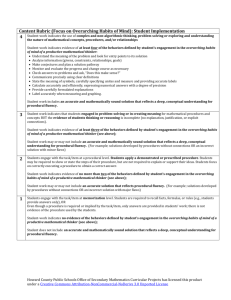Guide to Grades in Skyward
advertisement
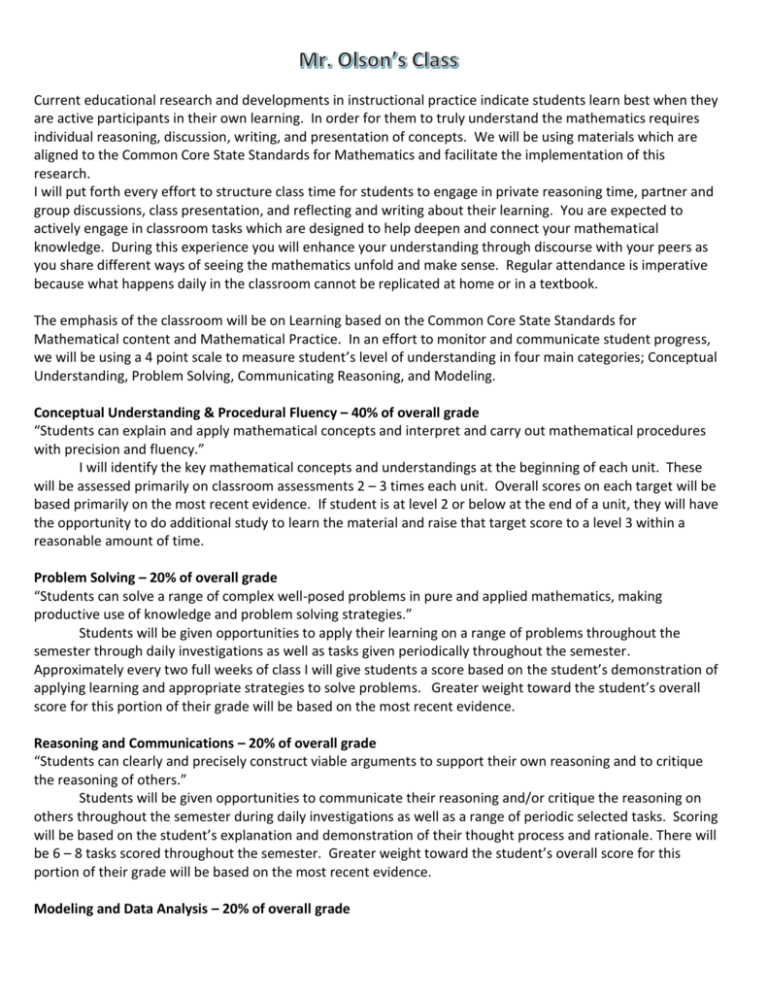
Current educational research and developments in instructional practice indicate students learn best when they are active participants in their own learning. In order for them to truly understand the mathematics requires individual reasoning, discussion, writing, and presentation of concepts. We will be using materials which are aligned to the Common Core State Standards for Mathematics and facilitate the implementation of this research. I will put forth every effort to structure class time for students to engage in private reasoning time, partner and group discussions, class presentation, and reflecting and writing about their learning. You are expected to actively engage in classroom tasks which are designed to help deepen and connect your mathematical knowledge. During this experience you will enhance your understanding through discourse with your peers as you share different ways of seeing the mathematics unfold and make sense. Regular attendance is imperative because what happens daily in the classroom cannot be replicated at home or in a textbook. The emphasis of the classroom will be on Learning based on the Common Core State Standards for Mathematical content and Mathematical Practice. In an effort to monitor and communicate student progress, we will be using a 4 point scale to measure student’s level of understanding in four main categories; Conceptual Understanding, Problem Solving, Communicating Reasoning, and Modeling. Conceptual Understanding & Procedural Fluency – 40% of overall grade “Students can explain and apply mathematical concepts and interpret and carry out mathematical procedures with precision and fluency.” I will identify the key mathematical concepts and understandings at the beginning of each unit. These will be assessed primarily on classroom assessments 2 – 3 times each unit. Overall scores on each target will be based primarily on the most recent evidence. If student is at level 2 or below at the end of a unit, they will have the opportunity to do additional study to learn the material and raise that target score to a level 3 within a reasonable amount of time. Problem Solving – 20% of overall grade “Students can solve a range of complex well-posed problems in pure and applied mathematics, making productive use of knowledge and problem solving strategies.” Students will be given opportunities to apply their learning on a range of problems throughout the semester through daily investigations as well as tasks given periodically throughout the semester. Approximately every two full weeks of class I will give students a score based on the student’s demonstration of applying learning and appropriate strategies to solve problems. Greater weight toward the student’s overall score for this portion of their grade will be based on the most recent evidence. Reasoning and Communications – 20% of overall grade “Students can clearly and precisely construct viable arguments to support their own reasoning and to critique the reasoning of others.” Students will be given opportunities to communicate their reasoning and/or critique the reasoning on others throughout the semester during daily investigations as well as a range of periodic selected tasks. Scoring will be based on the student’s explanation and demonstration of their thought process and rationale. There will be 6 – 8 tasks scored throughout the semester. Greater weight toward the student’s overall score for this portion of their grade will be based on the most recent evidence. Modeling and Data Analysis – 20% of overall grade “Students can analyze complex, real-world scenarios and can construct and use mathematical models to interpret and solve problems.” Students will be given opportunities to model real world situations using graphs, tables, verbal descriptions, and equations and then interpret those representations to solve problems. These skills will be practiced through daily investigations and homework and then assessed on a range of 6 – 8 tasks throughout the semester. Scoring will be based on the student’s use of multiple representations and interpretations on each task. Greater weight toward the student’s overall score for this portion of their grade will be based on the most recent evidence. LEVELS OF UNDERSTANDING Level 4 3 Quick Meaning Highly Proficient Proficient Student Speak I totally get it! I could teach someone else. I can explain why it works. I know exactly what to do. I use correct notation and vocabulary. I can use it to solve problems I’ve never seen before. I’ve mastered it. I get it most of the time. I can do it myself, but still have some questions. I can do problems like the ones I’ve seen before. I can justify my solutions to problems, and get them right most the time. I use correct notation and vocabulary most of the time. Description Solid grasp of the concepts, procedures, notation, and communication. Justify my solutions and demonstrate conceptual understanding Work typically shows Accurate answers with justification. Clear communication. Conceptual understanding. Application of learning. Descriptors: Mastery, Thorough, Comprehensive, Excellent, Cohesive, Advanced Reasonable grasp of the concepts, procedures and notation; yet lacking in communication, accuracy, conventions or efficacy. Work typically shows Accurate or near accurate answers Mostly clear communication Ability to solve routine problems requiring multiple steps. Ability to organize data and make observations. Descriptors: Proficient, Satisfactory 2 1 Developing Minimal I’m getting there! Work shows signs of developing I’m almost there, but can’t quite do it understanding. myself. Work typically shows I get it when you do it. Inaccurate answers, with some signs I still have lot’s of questions. of understanding I get more complex problems when OR Correct answers with no you do it, or when you help me. supporting work. With my group, I get the answers right Use of basic facts and skills, most of the time. No application or conceptual My use of notation and vocabulary is development. OK. No/little communication I can remember basic facts, or use Some connections with previous algorithms or formulas with some knowledge assistance. Descriptors: Developing, Progressing I don’t get it yet. No real understanding is shown I don’t understand the examples. Work typically shows I have seen those words and symbols Consistently inaccurate answers with before but I don’t know them or use no supporting work. them. No/little communication I need a lot of help! No/little connections with previous I’ve seen you use basic facts, knowledge algorithms, or formulas but I don’t Descriptors: Minimal understanding know them or use them. Grades in Skyward Skyward does not currently have the categories listed above, so I have assigned my categories to these skyward categories: Procedural fluency and Conceptual understanding ↔ KTH - Knowledge / Theory Problem Solving ↔ PRW - Problem of the Week Reasoning and Communication ↔ PRES - Presentation Modeling ↔ PROJ - Project The scores you see in skyward are all based on the 4 point scale, so the highest “percentage” a student can achieve is a 4%. Scores for individual tasks may be changed accordingly as students “reassess” on subsequent tasks. I encourage students to keep track of their scores on individual tasks and assessments so they are more aware of their levels of understanding on each target and category. All of these scores meant to convey levels of understanding and progress eventually must be translated into letter grades. Those letter grades are based on the following scale: Letter Grade Range A 3.5 – 4.0 A- B+ 3.35 – 3.49 3.20 – 3.34 B 3.00 – 3.19 B- C+ 2.85 – 2.99 2.75 – 2.84 C 2.50 – 2.74 C2.35 – 2.49 F 0.00 – 2.34
